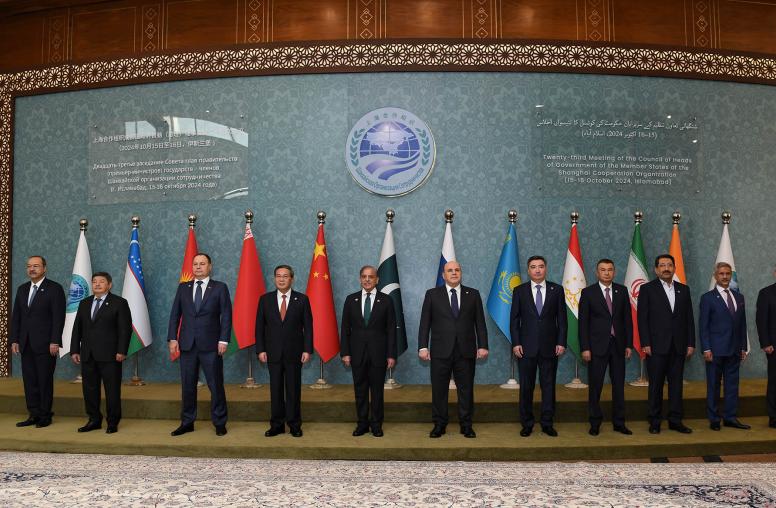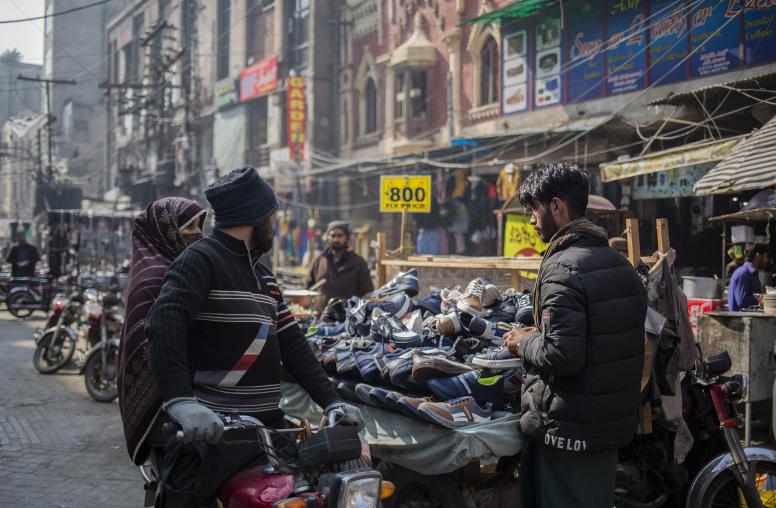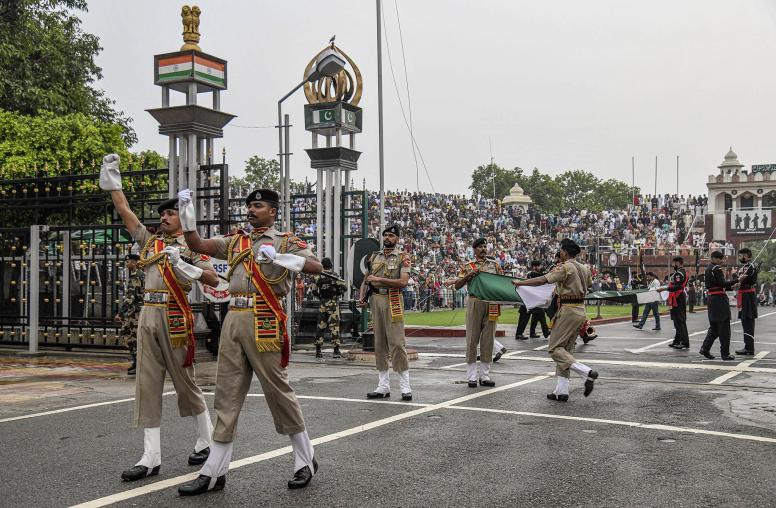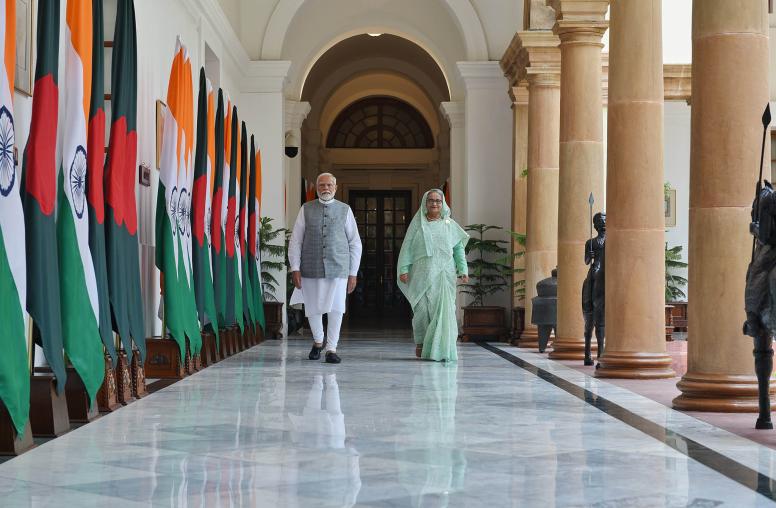Pakistan’s Existential Economic Crisis
There is a real danger that Pakistan could default on its debt, which could lead to intensifying political turmoil amid already surging terrorism.
Pakistan’s stability increasingly depends on the outcome of an ever-worsening economic crisis. Amid skyrocketing inflation, political conflict between Prime Minister Shehbaz Sharif’s government and former Prime Minister Imran Khan, and surging terrorism, the country is facing the risk of a default due to its massive external debt obligations. This burden has been exacerbated by the derailment of the $6.5 billion International Monetary Fund (IMF) program Pakistan entered in 2019, as the international lender is unsatisfied with Pakistan’s commitment to reform and ability to arrange for funds to meet external financing requirements. Troublingly, Pakistan’s official foreign exchange reserves are hovering around $4 billion, which is insufficient to finance even a one-month of the country’s import bill.

Can Pakistan recover from the economic abyss? To determine, it is important to consider: (1) the composition of Pakistan’s overall external debt; (2) repayment pressure on the debt in both the short- and medium-term; (3) potential inflows that can offset the debt outflows; and (4) Pakistan’s external debt management strategy.
1. Pakistan’s Debt Composition — and the Terms on the Debt
As of December 2022, Pakistan holds external debt and liabilities of $126.3 billion. Nearly 77% of this debt, amounting to $97.5 billion is directly owed by the government of Pakistan to various creditors; an additional $7.9 billion is owed by government-controlled public sector enterprises to multilateral creditors.
Who are these creditors? Pakistan’s creditors fall in four broad categories: multilateral debt, Paris Club debt, private and commercial loans, and Chinese debt.
Multilateral Debt
A major share of Pakistan’s debt is owed to multilateral institutions, amounting to roughly $45 billion. Islamabad’s main multilateral creditors include the World Bank ($18 billion), the Asian Development Bank ($15 billion) and the IMF ($7.6 billion). Pakistan owes smaller amounts to the Islamic Development Bank and the Asian Infrastructure Investment Bank as well.
While a significant amount of Pakistan’s total debt, multilateral debt doesn’t present major short-term risks for Pakistan. The terms of most loans are largely concessional with a repayment timeline spanning 18 to 30 years; most repayments are spread in many small transactions. In 2022-23, Pakistan repaid a total $4.5 billion debt to multilateral creditors, which is a fifth of the total debt repayment for the year.
Paris Club Debt
Pakistan owes $8.5 billion to the Paris Club, a group of 22 major-creditor countries. This debt is scheduled to be repaid over 40 years with less than 1% interest rate, and is mostly owed to Japan, Germany, France and the United States.
Private Debt and Commercial Loans
Pakistan holds a large amount of private debt; much of this is in the form of private bonds, such as Eurobonds and global Sukuk bonds, amounting to $7.8 billion. Some of this debt is recent: In the last fiscal year, Pakistan raised $2 billion by floating Eurobonds of 5, 10, and 30 years at an interest rate ranging from 6 percent for five years and 8.87 percent for 30 years.
Pakistan holds foreign commercial loans to the tune of nearly $7 billion, which is likely to increase to nearly $9 billion by the end of the current fiscal year. Much of Pakistan’s commercial loan stock is owed to Chinese financial institutions, as Pakistan has repaid major non-Chinese commercial loans of institutions.
Most commercial loans come with steep terms; they have to be repaid to the lenders between one to three years. The rates on the loans are high as well. Some are benchmarked against the London Interbank Offered Rate (also known as LIBOR). Others, like Chinese commercial loans, are pegged against the Shanghai Interbank Offered Rate (SHIBOR). For example, Pakistan recently obtained a $2.2 billion commercial loan from the China Development Bank at six-month SHIBOR rate plus 1.5 percent; this loan is to be repaid over a three-year period.
Chinese Bilateral Debt
Pakistan holds around $27 billion of Chinese debt. This includes around $10 billion of bilateral debt and $6.2 billion in debt provided by the Chinese government to Pakistani public sector enterprises, and Chinese commercial loans of around $7 billion. In addition, China’s State Administration of Foreign Exchange (SAFE) has placed $4 billion worth of foreign deposits with Pakistan’s central bank. The bilateral debt is on concessional terms with a maturity period of 20 years. In addition to the $27 billion in debt, Pakistan also has a currency swap facility with the Chinese.
2. Short- and Medium-Term Debt Repayment Pressure
Pakistan’s large external debt comes with considerable repayment pressure. From April 2023 to June 2026, Pakistan needs to repay $77.5 billion in external debt. For a $350 billion economy, this is a hefty burden. The major repayments in the next three years are to Chinese financial institutions, private creditors and Saudi Arabia.
Pakistan faces near-term debt repayment pressure. From April to June 2023, the external debt servicing burden is $4.5 billion. The major repayments are due in June when a $1 billion Chinese SAFE deposit and a roughly $1.4 billion Chinese commercial loan would mature. Pakistani authorities hope to convince the Chinese to refinance and rollover both debts, something the Chinese government and commercial banks have done in the past.
Even if Pakistan manages to meet these obligations, the next fiscal year will be more challenging, as the debt servicing will rise to nearly $25 billion. This includes $15 billion of short-term loans and $7 billion in long-term debt, including a vital $1 billion repayment on a Eurobond in the fourth quarter. The short-term debt repayments include $4 billion Chinese SAFE deposits, $3 billion Saudi deposits and $2 billion UAE deposits; the Pakistani government assumes they will be rolled over by the creditors each year. Separately, Pakistan will need to repay another $1.1 billion of long-term commercial loans to Chinese banks.
In 2024-25, Pakistan’s debt servicing is likely to be around $24.6 billion, which includes $8.2 billion long-term debt repayments and another $14.5 billion short-term debt repayments; this includes major repayments to Chinese lenders of $3.8 billion. In 2025-26, the debt servicing burden is likely to be at least $23 billion; that year Pakistan is to pay back $8 billion in long-term debt, including repaying $1.8 billion for a Eurobond and $1.9 billion to Chinese commercial lender.
3. Exports, Investments and Remittances — and Pakistan’s Repayment Calculus
In order to repay its debt and avoid a sovereign default, Pakistan’s earnings from exports, foreign direct investment and remittance inflows from foreign workers are vital. However, all three inflows are projected to not keep pace with the import bill as well as the mounting debt repayment pressure.
For example, over the last three years, Pakistan’s export earnings and remittances were a total of $164 billion, compared to $170 billion worth of imports of goods. Over the next three years as well, imports are likely to be higher than the total dollar amount of exports and remittances, which will lead to a current account deficit requiring external financing. On the export side, the IMF had projected nearly $36 billion exports for 2022-23. That has now been revised with a new estimate of $28-29 billion, partly due to the rising cost of business and economic dislocation resulting from the uncertainty in the country.
Foreign direct investment is projected to remain subdued as well. In recent years, investment has averaged a dismal $2 billion annually due to challenging business environment and frequent policy changes; similar levels of investments are the best case for the next few years. Investor sentiment has also been impacted by the government’s recent restrictions on the movement of capital outside the country.
4. Options to Manage External Debt
Pakistan’s economic managers have only two options for addressing its external debt burden. The first is to take fresh loans and seek rollovers of debt. However, due to downgrades by international credit rating agencies, Pakistan’s ability to access sovereign financing market is limited. So Pakistani leadership will depend on Middle Eastern partners and China, not just for existing rollover but also fresh loans if it seeks to avoid a default. The specific amount Pakistan may seek will depend on negotiations with the IMF. If the derailed IMF program is revived, the amount will be smaller than the one it would seek if the program collapses. And in case the currently derailed IMF program is revived and completed over the summer, Pakistan will need a new IMF program, in addition to new loans and rollovers from its Middle Eastern and Chinese partners, due to its external debt burden over the new three years.
Another possibility is that Pakistan seeks pre-emptive restructuring of debt. Doing so will reduce the repayment pressure and spare scarce dollars in the economy to finance the country’s current account deficit. The Pakistani government has met with investment banks and advisors to explore restructuring options. However, for now, officials are reluctant as a restructuring process will be both painful and long, and also because of the political backlash of associated austerity measures.
What Does this Mean for Pakistan’s Stability?
There is a real danger that nuclear-armed Pakistan with a population of nearly 230 million people may be unable to meet its external debt obligations — which will trigger a sovereign default. To avert this scenario, Pakistan needs IMF’s continued support as well as help from Chinese and Middle Eastern partners. Pakistani leadership has been asking the United States to intercede with the IMF, but that effort hasn’t borne fruit in the way they hoped for. Pakistani leadership is also making frantic efforts for bailouts from foreign partners, but it is unclear if they will make the difficult reform choices necessary to win the trust of the IMF. If Pakistan ultimately defaults, there will be a cascade of disruptive effects. Crucially, Pakistan’s imports could be disrupted, which could lead to a shortage of some essential goods and commodities. In Sri Lanka, the disruption of oil imports stoked public discontent, protests and a change in government. Pakistan, which is already seeing intense political conflict between Sharif’s government and opposition leader Khan, may also see the economic crisis creating more political turmoil. And given Pakistan’s demographic profile and surging terrorism threats, the resulting crisis could go in unexpected directions.
Shahbaz Rana is an economic correspondent with Pakistan’s daily English newspaper The Express Tribune and the host of a primetime TV show, The Review, at Express News.



